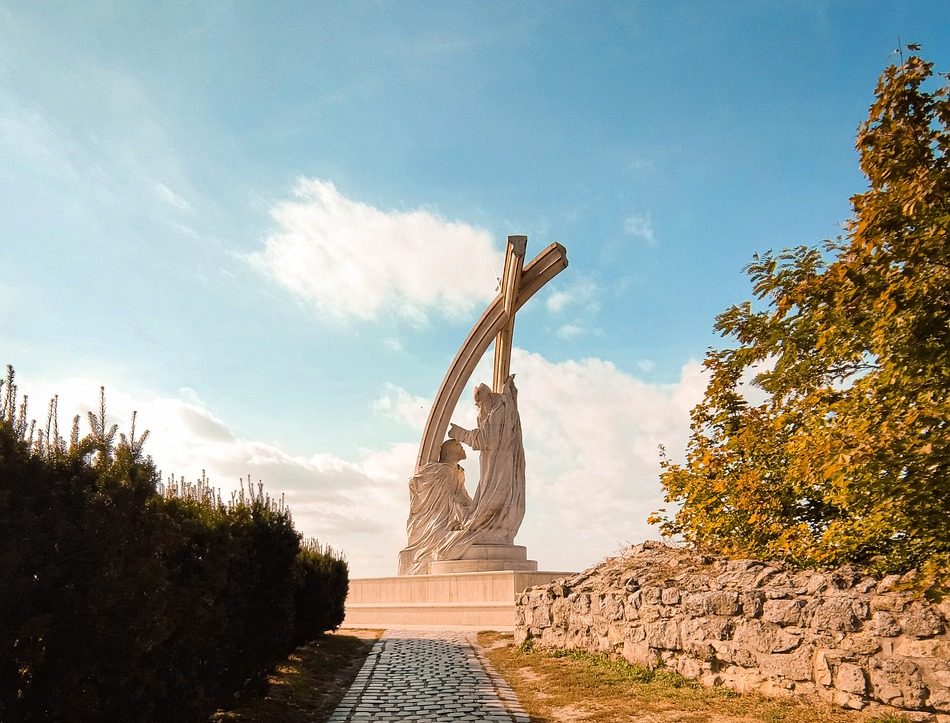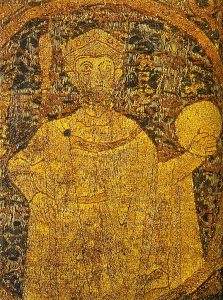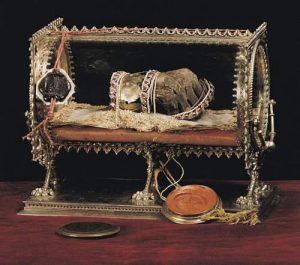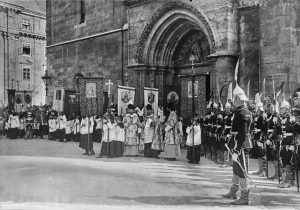August 20 is one of the most important events in the country in terms of interest and participation.Continue reading

As August ends and the school year approaches, for many Hungarian families, August 20th represents the last true summer holiday.
As historical magazine Rubicon writes, since the fall of communist regime in 1989, this day has become Hungary’s most significant state holiday, known as St. Stephen’s Day. However, its meaning and significance have evolved over centuries, reflecting Hungary’s rich and complex history.

Depiction of St. Stephen on the Coronation Robe. Picture: Wikipedia
The origins of St. Stephen’s Day are deeply intertwined with the life and death of King Stephen I, Hungary’s first Christian king. Traditionally, saints’ feast days align with the day of their death, and for St. Stephen, this occurred on August 15, 1038, coinciding with the Feast of the Assumption of the Virgin Mary. St. Stephen’s close connection with the Holy Mother, to whom he dedicated Hungary on his deathbed, laid the foundation for his sainthood and the later celebration of his life.

The “Holy Right” in its silver relic holder. Photo: Wikipedia
The formal celebration of St. Stephen’s Day began with the first Christian king’s canonization in 1083 by King St. Ladislaus I. (László), who sought to strengthen Hungary’s Christian identity.
The canonization, held on August 20th in the Basilica of the Virgin Mary in Székesfehérvár (the city of coronations in Central Hungary), solidified this date as the official feast day. The “Holy Right,” a relic of St. Stephen’s right hand, became a significant symbol and was venerated throughout Hungary, further embedding the day in the nation’s religious and cultural consciousness.

Celebration of the “Holy Right” in 1904. Photo: Fortepan / Deutsche Fotothek / Brück und Sohn
Throughout history, St. Stephen’s Day has adapted to the changing political and social landscape of Hungary. In 1891, it was declared a public holiday, though it faced opposition from Protestant denominations due to its Catholic roots. During the Horthy era (from the 1920s to 1945, during the reign of Governor Admiral Miklós Horthy), the holiday gained revisionist significance, symbolizing Hungary’s lost territories.

Fireworks in 1938 symbolizing “Greater Hungary”. Photo: Fortepan / Heinzley Béla
The day was marked by grand celebrations, including fireworks, and reached its peak in 1938, during the 900th anniversary of Stephen’s death.
After World War II, the communist regime repurposed August 20th, stripping it of its religious significance and rebranding it as “Day of the Constitution” to celebrate the Stalinist constitution. The religious aspects of the holiday, including the “Holy Right” procession, were suppressed until the fall of communism in 1989, when the original meaning of the day was restored.
Today, St. Stephen’s Day commemorates the founding of the Hungarian state and the nation’s Christian heritage.

August 20 air parade in the 1960s. Photo: Fortepan / Inkey Tibor
The day is marked by various festivities, including the “Holy Right” procession, fireworks, and the presentation of the Order of St. Stephen, reinstated in 2013. The holiday also celebrates Hungary’s agricultural traditions, symbolized by the “bread of the country” and the “Hungary’s Cake.”
St. Stephen’s Day has evolved from a religious feast to a national celebration that honors Hungary’s historical roots and statehood. It continues to be a day of unity and pride, reflecting the resilience and enduring spirit of the Hungarian people.
Via Rubicon; Featured Image: Pixabay